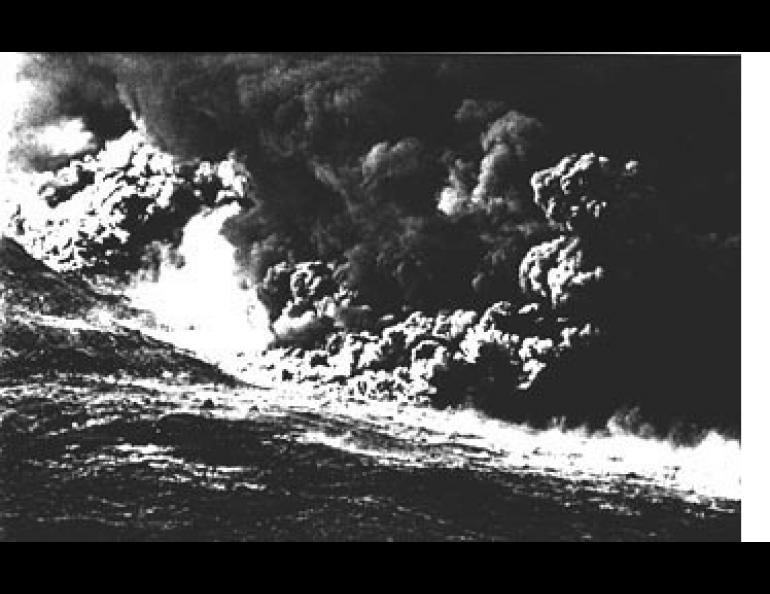
Mount St. Augustine Volcano Generating Fiery Avalanches
After a quiet period since its major eruptions in March and April of this year, Mount St. Augustine Volcano awoke again in late August. The primary indication that the island volcano was once again the scene of eruptive activity was a nearly continuous background level of seismic activity, which was monitored by the Geophysical Institute in Fairbanks. In addition, the long-suffering town of Homer (60 miles to the northeast of Augustine) again found itself the victim of a dusting of volcanic ash and muddy rains.
As a volcanologist with the Geophysical Institute since 1970, I was very interested in investigating the situation on the ground. On August 28, I escorted Maurice and Katia Krafft, a French husband-and-wife volcanologist team, to the island by helicopter. As it developed, this provided a rare opportunity to observe "pyroclastic flows" at close range. (The name comes from Greek roots--"pyro," fire; "clastic," broken--and refers to an avalanche of hot volcanic debris from the vent area of a volcano.)
What made this visit to the volcano such a unique opportunity was that pyroclastic flows were occurring at the rate of one every 15 to 30 minutes!
Because the flows were channeled by the topography of Mount St. Augustine, it was possible for us to stand very near their course and watch them roll by; strong winds helped to protect us from the heat. It was a positively eerie experience: the flows traveled ghostlike in absolute silence and at great speed (clocked at about 90 miles per hour). Maurice and Katia observed purple lightning flashes within the clouds, but heard no accompanying thunderclaps (probably because the sound was muffled by the dense ash and debris).
Pyroclastic flows are hot, gas-rich currents of dust and pumice produced when the gases in near-surface magma suddenly expand and foam out. An every-day analogy is popcorn. When the water in a kernel "flashes" to steam, it puffs up and fragments the outer shell. Similarly, when a magma body reaches a certain critical point, the pent-up gases burst free and the molten rock turns into a foam-pumice. Further expansion of the gas breaks the glass bubble walls of the pumice, turning it into dust, and the total mass of hot gas, pumice, glass shards and dust rolls down the mountainside under the influence of gravity. Just before a new pyroclastic flow appeared from the cloud-covered summit of Mount St. Augustine,we could feel a distinct pressure pulse in the air. This, no doubt, signaled the pressure release and the foaming of the magma above us.
Once underway, the mass is "autoexplosive." That is, individual pumice fragments within the glowing cloud continue to expand and break, releasing gas and water vapor as they travel. This is one reason why the flows are nearly frictionless and are so totally silent.
As they roll on, the entire front wall of each flow assumes a rotary motion which ejects jets of sandy material ahead of it. That the evolving, glowing clouds are otherwise so cohesive suggests that they are held together by electrostatic charge. Occasionally, we would observe that the advancing cloud would trap air in a pocket behind some obstacle. When this happened, the air would suddenly boil up through the avalanche, jetting material diagonally upwards. Having passed, the flows leave ridges of pumice to either side of the flow channels, much like the rows of snow left behind a snow plow.
The volcano has now returned to a quiet state. On September 11, I returned with Tom Miller of the U.S. Geological Survey in Anchorage and observed that a new spire had been extruded from the summit. There is little doubt that Mount St. Augustine will remain a subject of scientific interest--and a matter for maritime caution--for many years to come.





